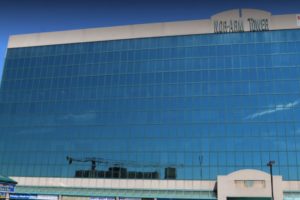On of the things that get many people in debt trouble and on the road to bankruptcy, especially self-employed people or small business owners, is non-payment of taxes. Income tax debt can pile up very fast because it never goes away unless you pay it all off (or most of it, under a consumer proposal) or it is discharged in bankruptcy.
The annoying part is that whereas other debts don’t come back unless you don’t learn your lesson and fall back into bad habits, income tax owning keeps accumulating as you work hard (literally!) to meet your proposal or bankruptcy obligations.
There are really three problems in dealing with income tax debt: getting up to date on income tax owing, straightening out your current income tax return and staying on top of future income tax payments.
In a bankruptcy, one of the bankruptcy trustee’s first tasks is to file an income tax return for the year prior to bankruptcy. The trustee must then file a return for the current year up to the time of bankruptcy. And then you must file a return for the remainder of the current year before the tax deadline in the coming year.
The past tax owing gets lumped in with all your other debts, under certain conditions, and it will be eliminated when you are discharged from bankruptcy. However, if income tax debt is your biggest debt (as is the case in most bankruptcies), it may not be automatically discharged when you emerge from bankruptcy (especially if it tops $200,000 or if it accounts for more than 75% of your debt).
However, there are other paths you can explore prior to filing for bankruptcy.
First and foremost is applying to the Canada Revenue Agency (CRA) for debt relief. The CRA may exempt payment of penalties or fines if the financial hardship was caused by extenuating circumstances such a physical duress (an accident or serious illness), emotional stress (such as that created by a death or divorce), natural or man-made disasters (such as floods or fires), or civil disturbances or disruptions of services (such as a lengthy postal strike or government shut-down).
Payment relief may also be available if the cause of the debt stress was related to CRA actions, such as processing delays or errors, not providing information in a timely manner to the individual or providing information later deemed erroneous, or undue delays in processing on the agency’s part.
And lastly, relief may also be granted if you can show an inability to pay due to loss of employment, if the interest penalties are a significant portion of the amount owed, or if repayment would result in considerable hardship to provide the basic necessities of life (food, shelter, medical help or transportation).
In the case of a small business, relief may also be granted if having to repay the outstanding amount might lead operations to cease, cause job losses or somehow influence the well-being of a community.
If relief cannot be had from the CRA, the next step to explore would be a consumer proposal. As in dealing with other debts, the trustee would file a proposal for repayment of a portion of the outstanding debt to the CRA, which may choose to accept the proposal.
If either of those avenues fails, then bankruptcy would be the final option. But remember, as you keep working under your new financial freedom, income tax keeps accruing, and if you’re not getting taxes deducted off a paycheque, then there is the chance you may not be able to pay off the accumulation at the end of each year and that would be considered new debt for which you are responsible.
-30-



